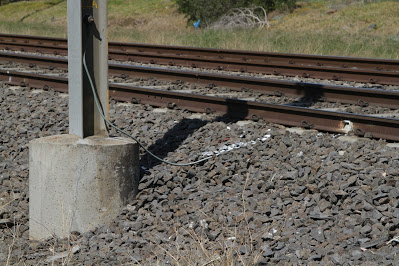#4 Railway Track Grounding
There are a lot of interesting invisible things that are working in Railways. We sometimes discover some of them. I too discovered something interesting about railway track grounding on keen observation.

Single Line Supply
We know that trains run on a single line supply i.e, just the phase line from the power station runs through the overhead lines and ground is provided by the rails.
Just to have an idea of current through the overhead line, consider a 3000 HP engine @ 25kV. This means that the current drawn is at least 90A (considering rated load).
Ground Resistance
Power stations generally have the neutral wire buried deep into the earth to have a very less ground resistance or almost zero ground resistance. But at the load side (train) the rails are laid on the surface. Assume a 10 Ohm ground resistance because of the rolling stock and the rails being laid on the surface. If a 100A current flows through this, there will be a 0.1MW loss from each train running on the track. So there is a great need to reduce the ground resistance to minimize losses.
How is it done?
I am sure you would have observed it. The rails are connected via a metal strip to the electric poles at every pole. Because the electric poles are made of metal and their foundation is buried deep enough to reduce groud resistance. The thing which fascinated me is that they do it at every pole along the track not even missing one. They don’t want to take a chance to waste more power.
Another interesting fact is that between two connecting rails, where a small gap is left to allow for thermal expansion, they weld a wire connecting the two rails to not compromise on the electrical connectivity.
Now you may think how it works for railway bridges? Well, they have a solution for that too. I saw this on the Chennai MRTS track, they run a continuous metal strip along the track in addition to the connections to all the electric poles. This continuous strip is connected to the concrete structures of the bridge which have TMT bars running to the foundation of the pillars of the bridge.
These methods have been there for quite a long time. In the recent metro rail projects, they have started using what is called the third rail, which is basically the neutral/ground wire, which runs along with the two main rails.
